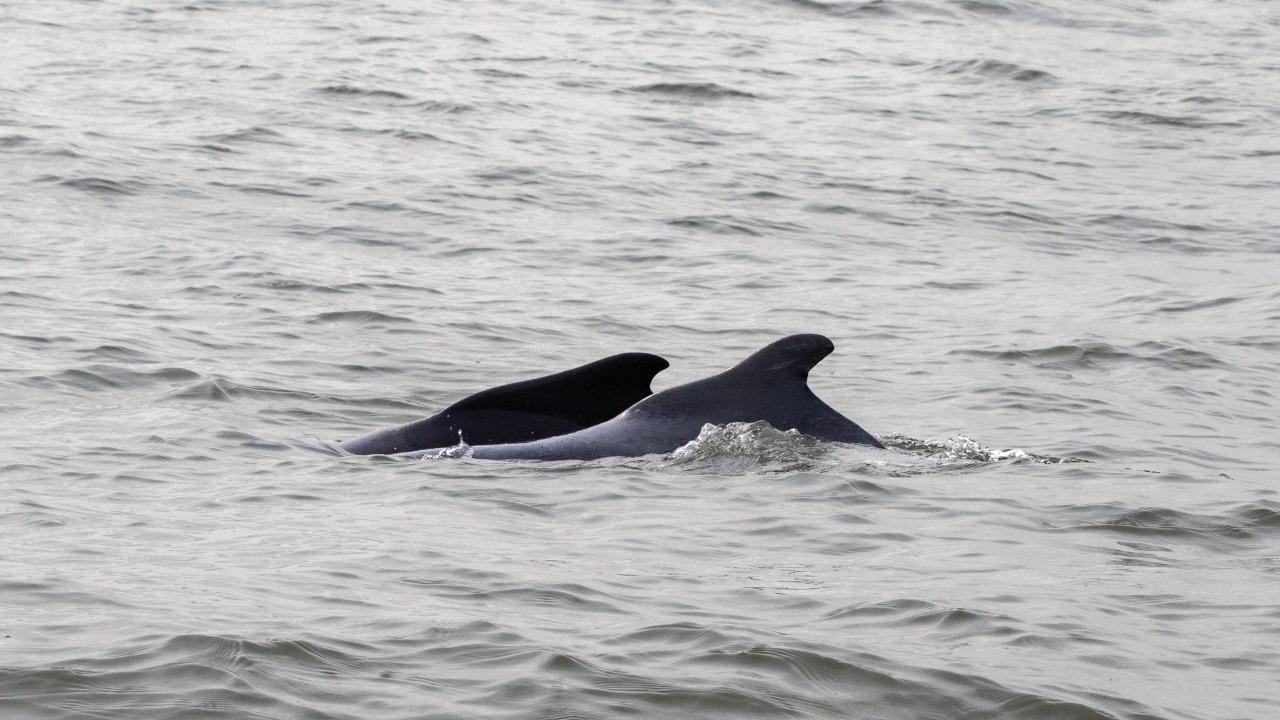A recent pilot study in south of Mumbai's Backbay resulted in 27 sightings of Indian Ocean humpback dolphins, prompting the state to conduct a detailed study across the entire MMR’s coastline

A pilot study in south of Mumbai's Backbay resulted in 27 sightings of Indian Ocean humpback dolphins. Pic/ Shaunak Modi
There is something surely for Mumbaikars to cheer about this World Environment Day. Mumbai will soon have better clarity about the number of dolphins across its 150-kilometer coastline as the Maharashtra State Mangrove Cell will launch a first-of-its-kind detailed population estimation exercise for these marine mammals.
ADVERTISEMENT
The announcement of this study comes after the results of a preliminary research exercise carried out by the Coastal Conservation Foundation (CCF), which was sanctioned by the Maharashtra State Mangrove Foundation that determined the population and habitat usage of Indian Ocean humpback dolphins in the Backbay region of south Mumbai. The study confirmed 27 sightings of dolphins of which the largest group comprised six individuals.
Dolphins are endangered cetacean species, protected under Schedule I of the Wildlife Protection Act, 1972.
Mumbai’s waters are known to harbour at least two cetaceans - the Indian Ocean humpback dolphin (Sousa plumbea) and the Indo-Pacific finless porpoise (Neophocaena phocaenoides), as per anecdotal sightings and documented stranding.
Also Read: Mumbai’s coral ensemble
Virendra Tiwari, Additional Principal Chief Conservator of Forest, Maharashtra Mangrove Cell, said, “There have been stray sightings of dolphins reported along the Mumbai coast all the way from Manori, Versova creek areas to Nariman Point, Marine Drive, and going towards Alibaug for quite some time now. However, no such dedicated population estimation or analysis of their habitat usage has been carried out prior to this. The study will begin post-monsoon across MMR.”
As per the pilot study, the principal investigator of the project Shaunak Modi along with cetacean ecologist Mahi Mankeshwar and marine enthusiast Pradip Patade used a total of seven boat surveys to observe the dolphins. “This rapid assessment helped us get a preliminary idea of how the dolphins are distributed in the study area and the various ways in which they use the habitat,” said Mankeshwar, who has previously worked in the Andaman & Nicobar Islands on marine mammals.
The study was conducted between Haji Ali Bay and Raj Bhavan and within the Back Bay, between April 14 and May 11, 2022, and the dolphins were encountered 27 times of which the largest group comprised six individuals and the smallest included one. Approximately 15 sightings from these were of groups that included juveniles and sub-adults.
“While dolphins in this area have been documented and photographed before, this study gave us an opportunity to understand how they react to both environmental and human-induced factors in the area. Through this pilot study, it's too early to know how many dolphins there are, and how this area is being used by juveniles, sub-adults and adults regularly,” said Modi.
The CCF team used environmental data such as the sea state, depth, temperature, salinity, turbidity and tide; and anthropogenic data such as the presence of fishing activity was recorded every time a pod/individual was sighted. Photographs of fins were taken whenever possible to use towards building a fin catalogue that could serve as the basis for future long-term population studies using photo-identification-based Mark-Recapture methods.
Researchers globally have pointed out how shifting climate impacts are having a direct influence on the habitat of Indian Ocean humpback dolphins, leading to changes in navigation and feeding patterns.
Tiwari added that a similar methodology will be used for the larger study across MMR as well. “These dolphins are also biological indicators and their behaviour and the environmental conditions they are surviving in will also reveal more details on climate impacts that they are exposed to and the interventions we can build,” he said.
About Indian Ocean humpback dolphins
● Indian Ocean humpback dolphins reside in groups of up to twelve individuals, however, this number varies greatly.
● Sciaenid fishes, cephalopods, and crustaceans make up their food.
● The species is listed as Globally Endangered by the International Union for Conservation of Nature (IUCN).
● Cetaceans such as dolphins that live in close proximity to coastal development and its ramifications have a high death rate owing to anthropogenic disturbances such as fishing entanglement, pollution, habitat degradation, and noise pollution.
 Subscribe today by clicking the link and stay updated with the latest news!" Click here!
Subscribe today by clicking the link and stay updated with the latest news!" Click here!







